Ivan Petkov
There are stacks of books about yoga. The essence of the teaching is that yoga is not a philosophy but anexperience. Each practical teaching exercise attempts to answer the most important questions that everyone asks. As a practical system, yoga gives its answers in the form of the proficiency and experiences which disciples gain through practising it. In this article I would like to briefly present yoga. The history of each different teaching resembles the story of a person, it shows how it has become what it is now and why, and how it has taken on its present form. It is important to understand that yoga is not a religion in the traditional sense of the word as the people of the West interpret it and therefore, I am using words like "teaching" and "system" when describing it.
Because yoga is a practical system, I must say that my experience is too modest in this regard. I am writing this article with a sense of gratitude and respect to all those who have shared their yogic experience with me and have allowed me, at least a little, to broaden my view of life and see "my mountain", the Taoist practices, from the "mountain" of yoga. I would like to express my gratitude also to those promoting this wonderful teaching in the world and in Bulgaria with great dedication. Yoga, like every good thing, can bring a lot of joy, wisdom and health to its followers.
Meaning of yoga
Yoga is one of the six Vedic schools which perceive meditation as a main tool for achieving liberation. A person practising physical, mental and spiritual yoga is called yogi. The word "yoga" originates from the ancient Sanskrit language and means, "to connect", "to bind", "to join", "to unite", "to merge", "to team up with", "to manage", "to control", and it may mean "concentration" too.
It should be noted that, over time, the word "yoga" has acquired additional meanings commonly associated with a particular practice and nowadays, there are at least 40 meanings given to this word.
Yoga undoubtedly is the most popular eastern teaching and it has the greatest number of practitioners worldwide. This is because yoga had opened to the world long before other esoteric teachings in which a disciple learns from a teacher. It was accessible to the general public as early as the 19th century CE and everyone who wanted to practise it was able to master it. When, some years ago, I decided to try to find out what yoga is and started practising it, I naively thought that there was only one system. Alas, I was wrong. The word "yoga" involves many different trends and schools, and new ones appear with each new generation, bearing the names of the teachers who have established them or the name under which they have chosen to share their experiences.
Probably this is confusing for the western practitioner, as we are influenced by Christian dogmatism in which things are firmly established and very rarely subject to change. The permanent change in the form and name of yoga teachings does not mean a complete change in mindset and fundamental principles. Quite the contrary, from what I have seen, yoga teachings retain the core of their principles but, at the same time, they continue to develop and seek the appropriate form to meet the requirements of modern lifestyle. Their diversity ensures their vitality and constant development and, to some extent, reflects the types of people - emotional, rational or active - for whom a certain path is appropriate.
Bhakti yoga is the path of devotion. It is appropriate for emotional people. In it devotional service and love are crucial for achieving liberation.
Karma yoga is the path of action, which is done without attachment to its fruits. This path is for those who prefer action.
Jnana yoga is the path of wisdom. This approach is suitable for rational people.
Raja yoga or the "royal road" is the classical yoga formulated by sage Patanjali. In it meditation plays a major role.
Hatha yoga is the section of yoga which we, the people of the West, most often associate with our idea of yoga. It includes body positions called asanas.
We cannot talk about yoga without mentioning the eight stages of yoga:
Yama - moral principles
Niyama - discipline
Asana - stable and comfortable position
Pranayama - extension of breath, breathing practices
Pratyahara - withdrawal of the senses
Dharana - concentration of mind
Dhyana - meditation
Samadhi - higher level of concentrated meditation

The chakras are one of the most popular yoga terms. They are the energy centres of our body. On the physical level they are associated with different glands and major nerve centres. The main chakras are seven in number and are located along the spine. The word "chakra" means "wheel". They are called in this way because the energy of the chakra is spinning like a wheel in them. Each chakra is responsible for different emotional conditions; the chakras are associated with different colours, qualities, etc. When the chakras are filled with energy, they are spinning harmoniously, your body is healthy and your emotions balanced. The purification and strengthening of the energy in the chakras is associated with kundalini - the energy that is lying dormant at the base of the spine. Kundalini awakening leads to realizing the full potential with which each of us is born. It is interesting to know that there are people who are born with awakened kundalini energy. They are the true leaders and teachers of mankind.
History of yoga
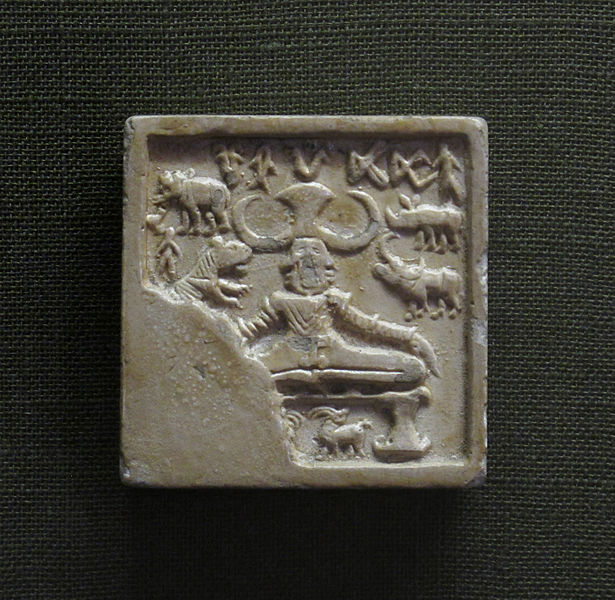
One of the most ancient archaeological artefacts depicting a man in a yoga pose
Archaeological studies are shifting the starting point of Indian culture far back in time. The most ancient civilization inhabiting the vast subcontinent was the Indus Valley Civilization (also known as the Harappan culture). Most probably, it had originated in the Indus Valley in the middle of the third millennium BC and had disappeared for still unexplained reasons a few centuries after 2000 BC. Its urban culture with its key representatives Harappa and Mohenjo Daro was remarkable. Very typical of them were the streets intersecting at right angles and the advanced technology of water supply and sewerage (long before the Roman state). A curious fact is the absence of buildings such as palaces or temples. There are no traces of centralized control or domination of a class of priests.
An important feature of the Harappan culture was literacy. Thousands of steatite seals have been found, decorated with figures of animals, mythological motifs and inscriptions in pictorial writing which, unfortunately, has not been deciphered to this day. One of these seals is especially important for the history of yoga. It depicts a horned deity seated in a meditative pose, surrounded by animals. It is believed that this is a prototype of Shiva in his role of Pashupati or "The lord of animals". Other data suggest the existence of a cult to the goddess and fertility. Very many findings demonstrate a striking continuity between the Harappan culture and the subsequent Indian society and culture.
In the centuries after 2000 BC, the Nomadic Indo-European tribes, known as the Aryan race, began to gradually invade the peninsula. Their prolonged contact with the indigenous population marked the formation of a new Indian culture. The four social classes or varnas (castes), namely Brahmins (priests), Kshatriya (warriors), Vaishyas (merchants) and Shudras (labourers) were formed precisely in this period.
The language of the Aryan race was Sanskrit and the four collections of the hymns forming the sacred canon of Hinduism, the Vedas, were written in Sanskrit. The oldest of them is the Rigveda. Its 1,028 hymns are grouped into 10 chapters and form the source of the Hindu religion. The Samaveda contains hymns for chanting during sacrifices. The vast majority of them had been taken from the Rigveda, the Atharvaveda being particularly important. This collection obtained its name from sage (Rishi) Atharvan, who had introduced the ritual of fire. It contains about 6,000 magic formulas including those for medical purposes.
It is clear that the Vedic culture is closely related to the rituals of the ancient Indians and especially to sacrifices which were perceived as the unity of the material world with the invisible world of the spirit. The practices mentioned in the Vedas are mainly of ecstatic and ascetic nature.
The Upanishads and the Bhagavad Gita
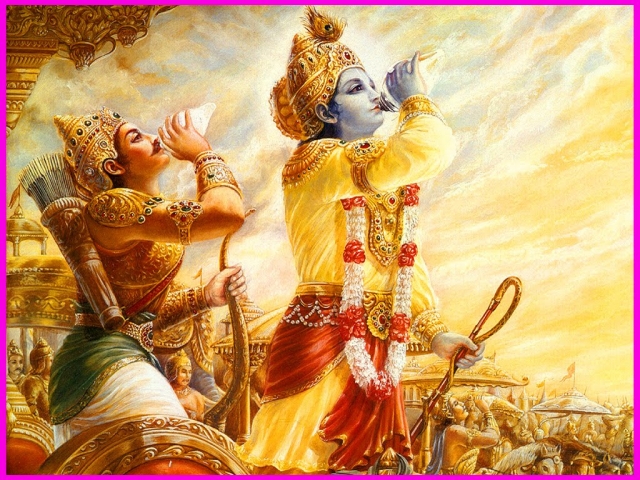
Krishna and his disciple Arjuna
The Upanishads, or philosophical treatises containing the secret teachings of Vedanta (lit., the end of the Vedas), started to appear from the beginning of the first millennium BC onwards. There are around 200 works, 108 of which are traditionally considered as classical and 10 as containing the fundamental principles of Vedic teachings. The Upanishads established the doctrine of the identity of the individual I (Atman) and the Supreme Absolute (Brahman), they developed the ideas of karma and reincarnation, and turned the release (moksha) from samsara (the cycles of existence) into a major focus of spiritual pursuits.
In the Upanishads, the knowledge of the true nature of things and the meditation practices designed to remove the obstacles to achieving this knowledge took the place of rituals. So, yoga continued to emerge as a system involving certain psychophysical techniques. Maitri Upanishad, for example, perceives yoga as a complex consisting of the following six parts: Pranayama (extension of breath), Pratyahara (withdrawal of the senses), Dhyana (meditation), Dharana (concentration of mind), Tarka (logic) and Samadhi (higher level of concentrated meditation).
The spiritual teachings outside the Vedic tradition which occurred in the 6th century BC, namely Buddhism and Jainism established respectively by Siddhartha Gautama and Vardhamana Mahavira, had a significant impact as well. They strongly opposed the sacrifices, rejected the importance of caste and based their teachings on the principle of nonviolence (ahimsa). All this had led to a kind of reformation in Brahmanism itself, especially with regard to ethical aspects whereas the ideas of Buddhism became a state religion during the reign of the third king of the Mauryan dynasty, Ashoka.
The grand Indian epic Mahabharata was completed not later than the 4th century BC. The main line in this huge work (18 volumes) is the fratricidal war between the Pandavas and the Kauravas. Stories and many other passages dealing with different aspects of life in ancient India weave into the poem which is why the Mahabharata can be perceived as a sort of encyclopaedia. In the epic, we find many references to yoga and Samkhya but the poem Bhagavad Gita which was inserted during the 4th – 3rd century BC is the most important for yoga and for Indian spirituality. It presents the teachings of Krishna as told by him to Prince Arjuna. On the eve of a battle, when the armies had already been formed, Arjuna was seized with indecision and doubt. Seeing the futility of the impending bloodshed he refused to fight. In response Krishna introduced him to the philosophy of different types of yoga, thus identifying the three major paths (margi) - bhakti yoga, karma yoga and jnana yoga.
Classical yoga
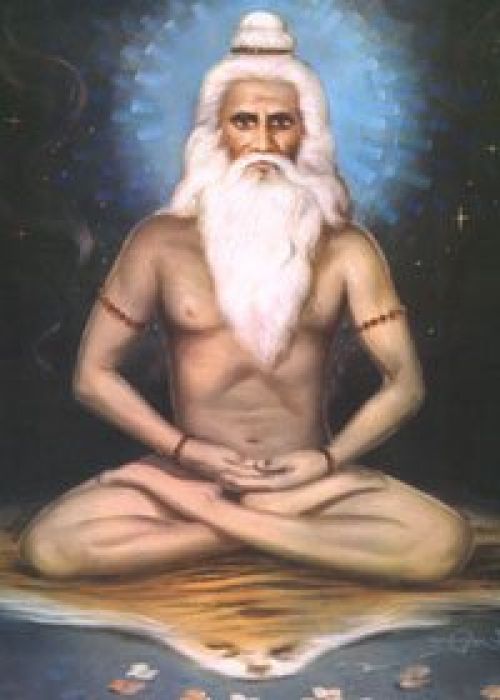
Patanjali
The six main schools (darshan) of Hindu philosophy, one of which is yoga, were established at the beginning of our era. Each school was systematized in short aphorisms called sutras (which means “thread”).
The remarkable role of sage Patanjali (who lived in the 2nd century CE at the latest) lies in the fact that, by writing Yoga Sutra, he had laid the foundations of classical yoga and its eight stages. Numerous reviews of the sutras appeared later on.
The system set out in the sutras and their comments is known as classical yoga or raja yoga (royal yoga). The principles drawn up in the sutras by Patanjali are rightly considered as the common foundation for every yoga practice or variety.
Postclassical yoga and tantra
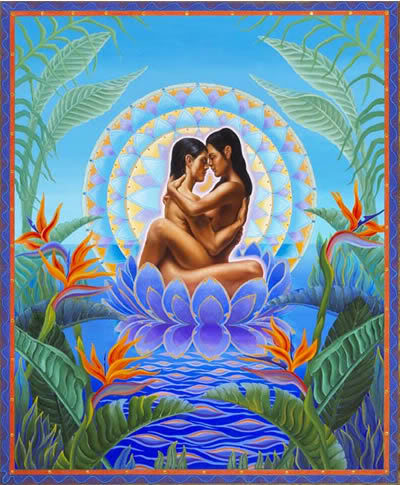 Tantra is known in the West as a system of practices for making love but they constitute only a small part of its practices.
Tantra is known in the West as a system of practices for making love but they constitute only a small part of its practices.
Over the centuries, many varieties of yoga had been established after Patanjali.
Famous Vedanta and Yoga teacher Sankara (788-822) played a crucial role in Indian spirituality as a whole. Along with Nagarjuna (Buddhist thinker, 2nd century CE ), he was one of the greatest minds in Indian and world history. In his short life he was able to present the philosophy of Advaita Vedanta in a remarkable way and to breathe new life into Vedic thought. Sankara left his insightful comments on each of the three main pillars of Vedanta - the Upanishads, the Bhagavad Gita and the Brahma Sutra. The Swami Order with its 12 divisions founded by him is still playing a significant role in spiritual life.
The cultural and philosophical tradition of Tantrism which had gathered momentum after the 4th century CE had a powerful influence on yoga. It marked all major Indian religions and often created quite exotic incarnations of them. The philosophy and practice of Tantrism are presented in texts called tantras.
Tantrism is based on the idea of merging the passive "male" principle of Shiva with the creative "female" aspect of the Absolute, worshiped as Shakti. The key to understanding these teachings is precisely the worship of the female principle. It is said that the path of tantra is particularly suitable for the dark age of Kali Yuga.
Tantric practices embody the idea of overcoming the pairs of opposites through their merger. They involve complex rituals charged with rich symbolism. For example, they widely use mantras and yantras - formulas representing certain forces in the nature of the language of sound and of geometric shapes respectively.
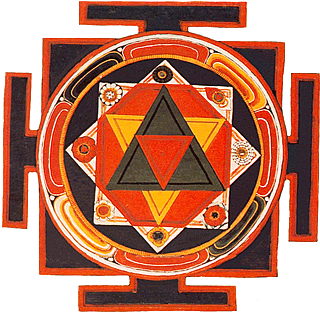
Yantra
Tantrism presents two paths known as dakshina marga (path of the right hand) and vama marga (path of the left hand). While the first of them focuses on inward practices and meditation, the main ritual of vama marga, panchamakara, is linked to the performance of five actions which usually are not recommended in other yoga systems, namely the intake of wine, meat, fish, toasted grain and ritual sex. The purpose of this is for the stored energy to awaken the coiled force kundalini which is asleep in the Muladhara chakra (an energy centre in the lower part of the spine). The physiology of chakras, nadis and kundalini is typical of the yoga systems that emerged in the Middle Ages and which were influenced by Tantrism. These include kundalini yoga, laya yoga, mantra yoga and hatha yoga which is popular today. It should be noted, however, that the system of chakras has its non-literal interpretations and applications just like panchamakara.

Posture of hatha yoga
During the Muslim rule in India bhakti movements became popular too. In the 16th century CE Chaitanya put new life into the cult of Krishna in Eastern India. Another famous Hindu saint of the time associated with bhakti yoga was Kabir who was respected by Muslims as well. The purpose of the teachings of Guru Nanak which became the basis of the unique synthesis of Hinduism and Islam, namely the Sikh religion, was similar.
Yoga in the Modern World
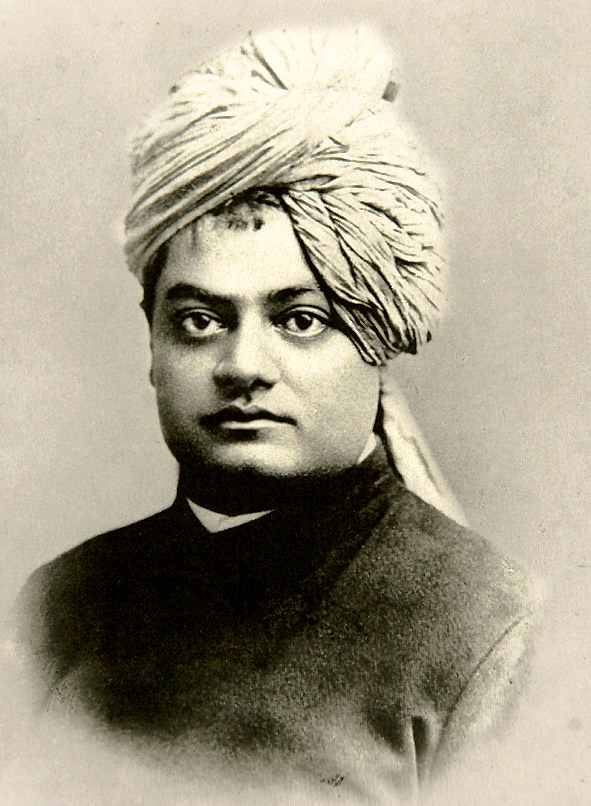 Swami Vivekananda
Swami Vivekananda
Swami Vivekananda laid the foundations of modern yoga with his participation at the World Parliament of Religions in Chicago in 1893. At this forum Vivekananda had greatly impressed the American audience and provoked a strong increase in the interest in Indian spirituality on the part of the West. The success of Swami Vivekananda paved the way for other propagandists of the ancient doctrine and their flow has not abated to this day.
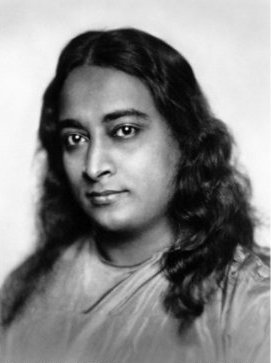 Paramahansa Yogananda
Paramahansa Yogananda
Paramahansa Yogananda was a popular teacher in the early years of introducing the West to yoga. He arrived in Boston in 1920 and five years later founded in Los Angeles the society for self-awareness. His "Autobiography of a Yogi" had inspired thousands of followers around the world but had also helped spread some ideas of the teaching associated with the exercise of supernatural powers and miracles, which are not so correct and are not directly related to the object and purpose of yoga.
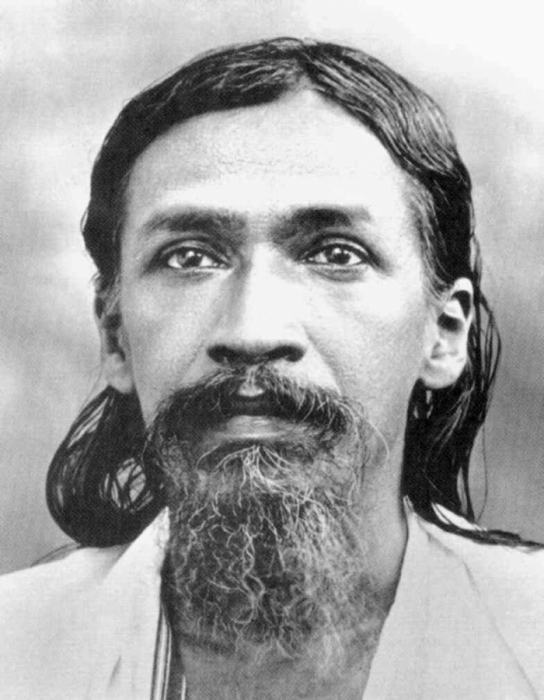
Sri Aurobindo Ghosh
One of the greatest philosophers of yoga, Sri Aurobindo Ghosh, created his works in the first half of the century. He grew up in an English family, studied in England and created an original philosophy called purna yoga (integral yoga) which explores yoga and Vedanta in the light of a peculiar evolutionary approach.
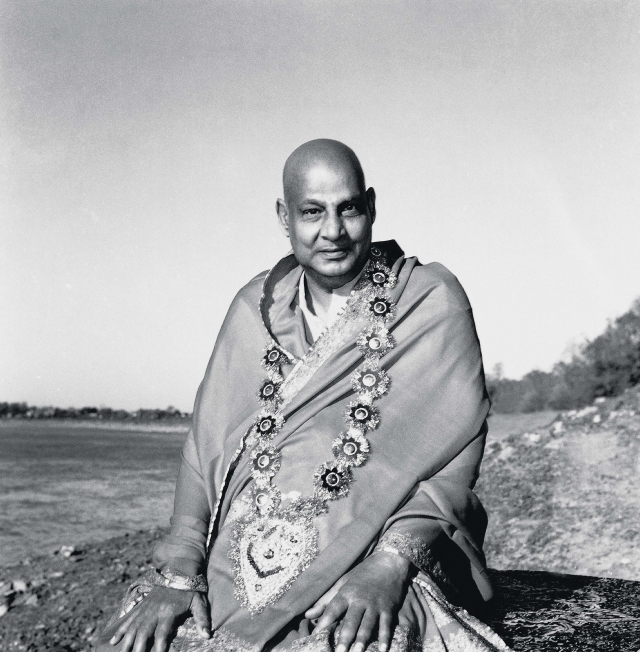 Swami Sivananda
Swami Sivananda
Swami Sivananda was probably the most prominent figure among the Indian yoga teachers. He embarked on the spiritual path after years of successful medical practice and, after long wandering, opened his ashram in Rishikesh, Himalayas. Later he established the organizations Divine Life Society and Yoga Vedanta Forest Academy. He wrote over 200 books, presenting in them the philosophy and practice of yoga in a unique style and in plain language. Many of his students have become popular in the West.
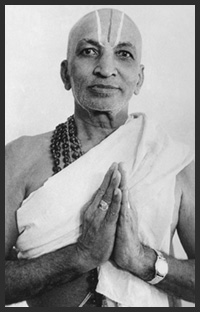
Sri Thirumoolar Krishnamacharya
Sri Thirumoolar Krishnamacharya is an eminent representative of hatha yoga in the modern world. He died in 1989, at the age of 101. His son Desikachar continues the work of his father and B. K.S. Iyengar, who wrote the most detailed practical guide, Pattabhi Joyce and Indra Devi are some of Krishnamacharya’s prominent disciples and great teachers as well. Iyengar taught yoga to the famous violinist and conductor, Yehudi Menuhin, who invited him to Europe in 1954, thus opening up his way to the West. Aldous Huxley and the Queen Mother of Belgium were among his students as well.
Many centres for the study and exploration of yoga were opened in the 20th century CE. In 1918, Sri Yogendra began conducting medical studies of yogi in the Research Institute in Bombay managed by him. Swami Kuvalayananda Kaivalyadhama founded a yoga ashram a hundred kilometres away, in the small resort town of Lonavala, which has significantly contributed to the scientific study of yoga. Swami Satyananda opened the Bihar School of Yoga.
Other famous names are the great Advaita Vedanta teacher, Ramana Maharshi, the former maths teacher, Swami Rama Tirtha, hatha yoga master Dhirendra Brahmachari, Jiddu Krishnamurti who is close to some forms of Zen, the author of thousands of lectures and meditation techniques, Osho, and more.
The activity of many gurus operating in the West is controversial. You can find and assess the value of the large number of teachings presented as authentic yoga only if you know the principles and practices of classical yoga.